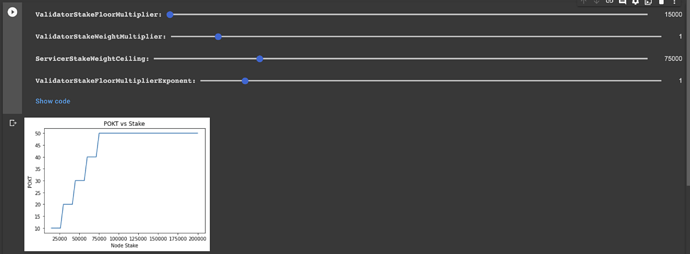Firstly, I’d like to say thank you for being one of the first people to challenge a proposal on constitutional grounds. This is very exciting for me 
In this case, I believe that PIP-22 is not unconstitutional. Let me illustrate why.
Firstly, it’s important that we don’t conflate servicers and validators here. Decoupling servicer rewards from relays in isolation (assuming no second order impact on validator rewards) would not be unconstitutional according to 4.25, since servicers outside of the MaxValidators validator set do not participate in “transaction finalization” and therefore have no “power to overthrow the government". It is the validator set whose incentive alignment we care about here.
So what does PIP-22 do to validator rewards? Validators earn a ProposerAllocation % of the total block reward, which is a summation of the coins formula for every servicer in the block. PIP-22 adds a parameter-based modifier to the coins formula that multiplies Relays*RelaysToTokensMultiplier by a “weight” value < 1. The validator’s own stake size does not factor into the new weight value, only servicer stake size, therefore the validator’s own stake size does not influence the block reward in PIP-22.
Fun and illustrative fact: since the genesis of the network, the consensus rules have deemed that a validator’s stake size influences their individual block rewards by increasing their odds of being selected to propose a block. This founding principle of the consensus rules violates the letter of 4.25 according to your argument (I disagree, more below), however even if it does it is overruled by 1.1.
1.1. This Constitution does not take precedence over the consensus rules defined by Pocket Core. If there is any conflict or inconsistency between this Constitution and the consensus rules, the consensus rules shall prevail.
So what do we do if we feel that there is a contradiction in our constitution, composed of an off-chain social constitution (which you’re referencing) and an on-chain constitution (the consensus rules of Pocket Core)? Like any good constitutional test, let’s try looking at precedent: WAGMI. WAGMI targets a network-wide annual inflation by adjusting RelaysToTokensMultiplier to cancel out fluctuations in the relay count. In other words, even if relays grow, validator rewards don’t grow. Why is this not unconstitutional? Because regardless of the coefficients in the coins formula, income is still directly proportional to relays. If relays fall to zero, validator rewards fall to zero.
PIP-22’s new weight modifier is bounded at 1, which means it rations the block reward but cannot generate extra rewards per relay, so servicers cannot increase their stake to counteract a meaningful drop in relays. With this fact in mind, I believe it’s misleading to say that in PIP-22 “Validator earnings would depend primarily on how much a node has staked”.
With this illustration I believe we can extract the spirit of 4.25 – that validators should act in the best interests of the users of the network’s relays, ensuring decisions are made to further the app experience so that they don’t eliminate the source of the network’s income. 4.25 is all about keeping validator rewards proportional to total relay count; it is agnostic as to what the coefficient of proportionality should be or whether or not different validator nodes have different coefficients.
And where PIPs are concerned, it is the spirit of the constitution that matters…
1.2. This constitution shall be enforced according to de jure interpretations of the Statutes (the letter of the constitution), except in the case of amendments to the Constitution or Pocket Core’s consensus rules, in which case they shall be enforced according to de facto interpretations of the Principles (the spirit of the constitution).
…where the Principles attempt to enshrine the spirit. For the issue that PIP-22 seeks to resolve, the 2nd most important principle is relevant
- Sustainable Decentralization: Pocket Network should optimize for as many sovereign Nodes as possible, because this reinforces the resilience and censorship-resistance of the service, but this should not be rushed at the cost of the sustainable growth of Pocket Network.

